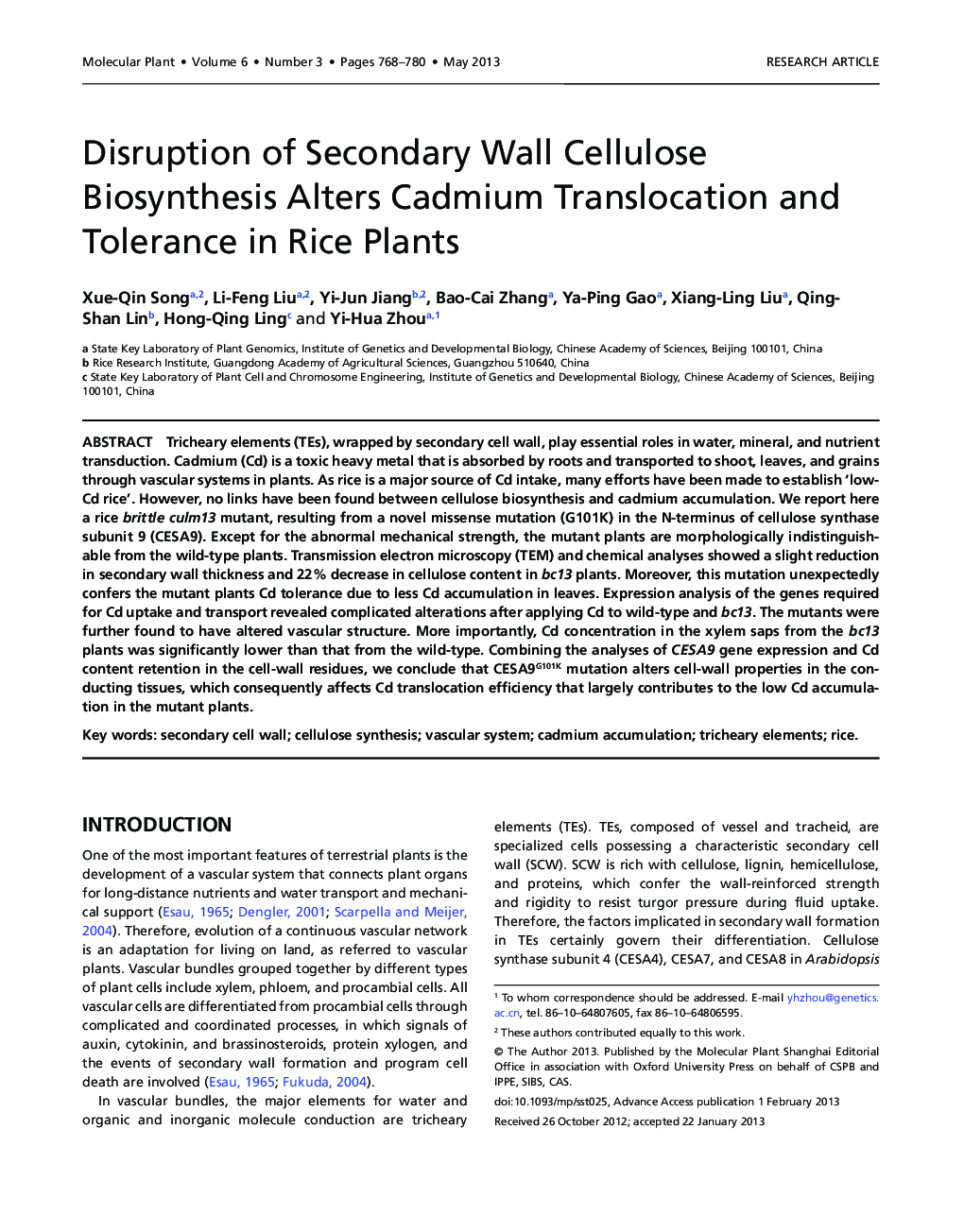| کد مقاله | کد نشریه | سال انتشار | مقاله انگلیسی | نسخه تمام متن |
|---|---|---|---|---|
| 4570328 | 1332016 | 2013 | 13 صفحه PDF | دانلود رایگان |

ABSTRACTTricheary elements (TEs), wrapped by secondary cell wall, play essential roles in water, mineral, and nutrient transduction. Cadmium (Cd) is a toxic heavy metal that is absorbed by roots and transported to shoot, leaves, and grains through vascular systems in plants. As rice is a major source of Cd intake, many efforts have been made to establish ‘low-Cd rice’. However, no links have been found between cellulose biosynthesis and cadmium accumulation. We report here a rice brittle culm13 mutant, resulting from a novel missense mutation (G101K) in the N-terminus of cellulose synthase subunit 9 (CESA9). Except for the abnormal mechanical strength, the mutant plants are morphologically indistinguishable from the wild-type plants. Transmission electron microscopy (TEM) and chemical analyses showed a slight reduction in secondary wall thickness and 22% decrease in cellulose content in bc13 plants. Moreover, this mutation unexpectedly confers the mutant plants Cd tolerance due to less Cd accumulation in leaves. Expression analysis of the genes required for Cd uptake and transport revealed complicated alterations after applying Cd to wild-type and bc13. The mutants were further found to have altered vascular structure. More importantly, Cd concentration in the xylem saps from the bc13 plants was significantly lower than that from the wild-type. Combining the analyses of CESA9 gene expression and Cd content retention in the cell-wall residues, we conclude that CESA9G101K mutation alters cell-wall properties in the conducting tissues, which consequently affects Cd translocation efficiency that largely contributes to the low Cd accumulation in the mutant plants. Secondary wall formation is critical for development of tricheary elements (TEs) that conduct water and minerals. We report the identification of a novel mutation in CESA9, which alters TE structure and confers rice plants Cd tolerance due to inefficient translocation.
Journal: - Volume 6, Issue 3, May 2013, Pages 768–780